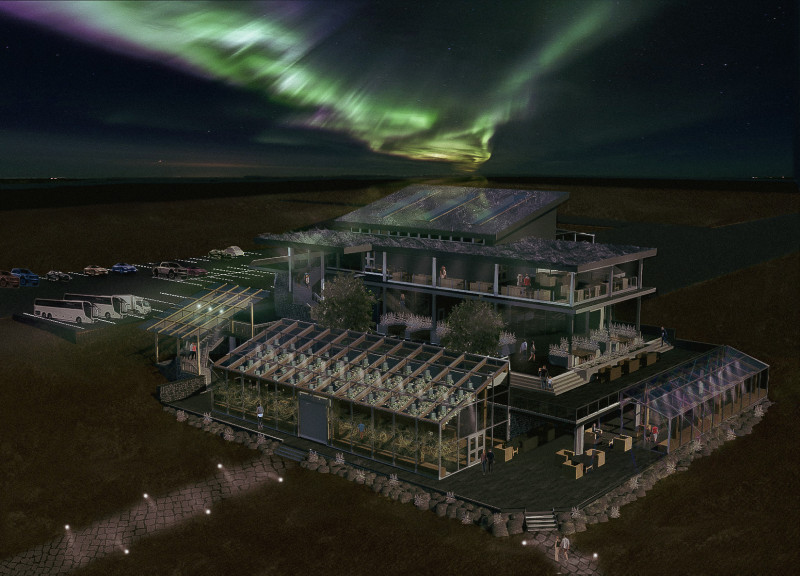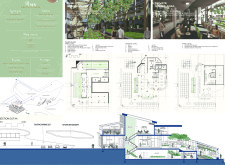5 key facts about this project
The Mývatn Greenhouse Restaurant is located in the Mývatn volcanic region of Iceland. It is designed to combine culinary experiences with agriculture, allowing visitors to connect with the surrounding landscape. The restaurant features views of the Mývatn baths and the Hyverfjall volcano, which enhance the dining experience. The overall concept focuses on sustainability and community involvement, making the restaurant more than just a place to eat.
Structure and Layout
The restaurant accommodates up to 100 guests indoors, with additional outdoor seating that can expand significantly during busier seasons. This design allows for flexibility in use, catering to both locals and tourists. By creating specific areas for dining, public interaction, and private gatherings, the layout encourages social engagement and offers a variety of dining experiences.
Integration of Agricultural Practices
A key element of the design is the inclusion of greenhouses. The primary greenhouse supplies seasonal produce directly to the kitchen, which supports a farm-to-table methodology that values fresh, local ingredients. There is also a public greenhouse where visitors can purchase products, which deepens the connection between the guests and the agricultural processes that influence their meals.
Material Choices
The Mývatn Greenhouse Restaurant uses various durable materials that complement the local environment. Textured concrete and rustic finishes provide a sturdy appearance that feels relevant to the landscape. A steel structure supports large open spaces while ensuring stability. Low-E glass is used for energy efficiency and heat control. Timber cladding adds warmth, while the choice of Yakisugi wood for decking demonstrates practicality and aesthetic quality in the local climate.
Spatial Experience
The design promotes engagement with the landscape through large windows that offer clear views. Natural light floods the interior, enhancing the atmosphere. The transition between indoor and outdoor spaces is designed to help guests feel connected to both the culinary offerings and the natural surroundings. This connection enriches the dining experience and encourages a sense of place that goes beyond just eating food.





















































